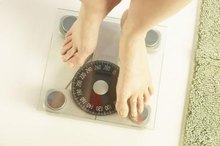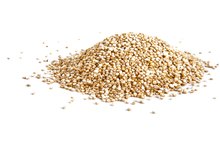Diet & Exercise Plans for Office Workers
Many people who work long hours in an office use their jobs as an excuse as to why they can't reach their fitness and physique goals. However, having a demanding work, social and family life doesn't mean you can't get in great shape. You just need to carefully plan your diet and exercise regimes so they fit conveniently into your day.
Diet
Diet is the most important factor in burning fat and losing weight. The U.S. Department of Agriculture recommend consuming between 1,800 and 2,400 calories per day for females, and 2,000 to 3,200 per day for males, depending on your age, weight and activity levels. Because office workers' jobs are fairly sedentary, you won't burn many calories during the working day, so start toward the lower end of these guidelines and adjust your intake in line with your progress. Aim to focus on nutrient-dense foods such as lean meat, fish, fruits, vegetables, low-fat dairy products, nuts, seeds and whole grains.
Eating at Work
Exercise Plans for College Students
Learn More
Sticking to your diet at work can be difficult. Meetings can often get in the way of eating, your office may lack food storage space and colleagues can often bring in junk food, which can be hard to resist. However, there is a way around this. Make sure you have a healthy, calorie-controlled lunch made up of nutrient-dense foods, and keep your desk drawer well-stocked with snacks. Nuts, seeds, dried fruit, tinned fish and jerky will all last a long time without being refrigerated. At the start of each week, bring in a five-day supply of cottage cheese, milk, fresh fruit and vegetables, deli meats and any other healthy perishable goods you can snack on, and leave them in the office fridge.
Cardiovascular Exercise
Cardiovascular exercise — such as swimming, running, walking, cycling and playing sports — burns calories, sheds fat and helps improve your fitness. If your working day is exceptionally busy, aim to do your cardio in the morning before breakfast. Bodybuilding diet coach Tom Venuto recommends this strategy because it helps boost your metabolism, burn extra fat and energizes you for the rest of the day. If you get the chance, go for a brisk walk at lunchtime to burn more calories and help clear your head.
Weight Training
How to Make Your Own Nutrisystem
Learn More
Weight training is a critical factor of any program, whether you're trying to build muscle, lose fat or get fitter. If you have access to a gym, aim to get there three times per week around your work hours and focus your sessions on free-weight compound exercises such as squats, lunges, bench presses and rows. Strength training doesn't have to take place in the gym, though. If you can't get to a gym or simply don't have time, then a body-weight workout in your own home consisting of pushups, pullups, squats, lunges and planks can be extremely challenging and deliver great results.
Related Articles
References
Writer Bio
Mike Samuels started writing for his own fitness website and local publications in 2008. He graduated from Peter Symonds College in the UK with A Levels in law, business and sports science, and is a fully qualified personal trainer, sports massage therapist and corrective exercise specialist with accreditations from Premier Global International.









